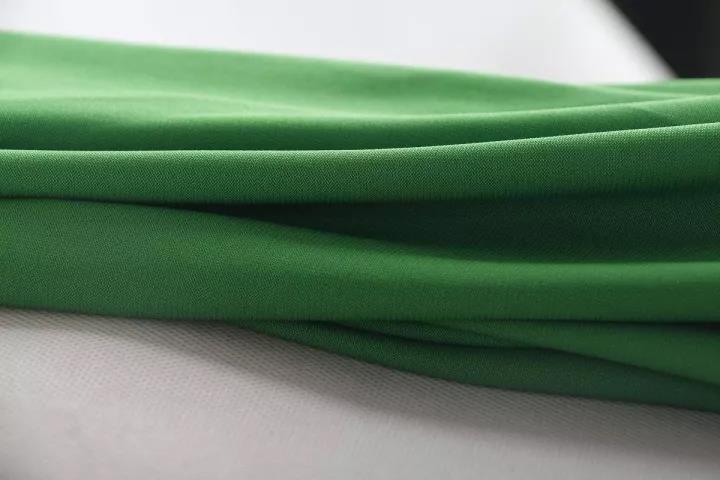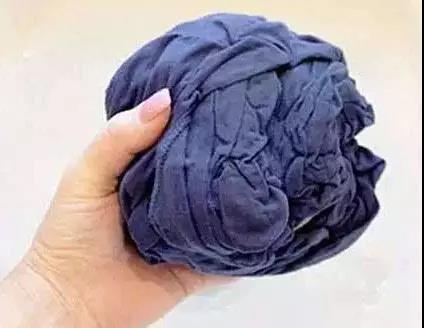Shrinkage is a phenomenon in which the length or width of the fabric changes after the process of washing, dewatering and drying in a certain state. The degree of shrinkage involves different kinds of fibers, fabric structure, fabric finishing by the different external forces and so on.
"The shrinkage rate is small is synthetic fiber and blended chemical fiber fabric woven products, followed by woolen fabrics, hemp fabrics, cotton fabrics in the middle, silk fabrics shrinkage is larger, and large is viscose fiber, rayon, artificial wool fabrics."
Objectively speaking, Cotton fabrics are more or less shrinkage and fading problems, the key is the back of the finishing. So the general home textile fabrics are pre-shrinking treatment. It is worth noting that after pre-shrinking treatment is not the same as no shrinkage, but refers to the shrinkage rate manipulated in the national standard 3% to 4% to, lingerie material, especially natural fiber clothing will shrink.
Therefore, in the purchase of clothing materials, in addition to the quality of the fabric, color, pattern selection, the shrinkage rate of the fabric should also have knowledge.
The shrinkage rate of general fabrics
Cotton: 4%~10%.
Chemical fiber: 4%~8%.
Cotton polyester: 3.5%~5 5%.
Natural white cloth: 3%.
Poplin: 3~4.5%.
Twill fabric: 4%.
Labor cloth: 10%.
Artificial cotton: 10%.
The effect of fiber and weaving shrinkage
The fiber itself will produce a certain degree of swelling after absorbing water. Usually the fiber swelling are anisotropic (except nylon), that is, the length shortened, the diameter increased. The difference between the length of the fabric before and after the water and the percentage of its original length is usually called the shrinkage rate. The stronger the water absorption capacity, the more intense the swelling, the higher the shrinkage rate, the worse the dimensional stability of the fabric.
The length of the fabric itself and the length of the yarn (silk) used are different, and the difference is usually expressed in terms of the weaving shrinkage. Weave shrinkage (%) = [yarn (silk) yarn length - fabric length] / fabric length
Fabric in the water, due to the dissolution of the fiber itself, so that the fabric length further shortened, resulting in shrinkage rate. Fabric weaving shrinkage rate is different, the size of the shrinkage rate is different. The fabric's own organizational structure and weaving tension is different, the weaving shrinkage rate is different. Weaving tension is small, the fabric is tight and thick, the weaving shrinkage rate is large, the shrinkage rate of the fabric is small.
Weaving tension is large, the fabric is loose and thin, weaving shrinkage rate is small, the shrinkage rate of the fabric is large. In the dyeing and finishing, in order to reduce the shrinkage rate of the fabric, often adopt the pre-shrinkage after finishing to increase the weft density, weaving shrinkage rate in advance, so as to reduce the shrinkage rate of the fabric.
The cause of shrinkage

1. Fiber in spinning, or spinning yarn in weaving and dyeing, fabric in the spinning line fiber by external forces and elongation or deformation, while the spinning line fiber and fabric structure to produce internal stress, in the static dry relaxation state, or static wet relaxation state, or in the dynamic wet relaxation state, full relaxation state, different degrees of internal stress release, so that the spinning line fiber and fabric back to the initial state.
2. Different fibers and their fabrics, the degree of shrinkage are different, depending on the characteristics of its fibers - hydrophilic fibers shrink more, such as cotton, hemp, viscose and other fibers; and hydrophobic fibers shrink less, such as synthetic fibers.
3. Fiber in the wet state, due to the role of liquid immersion under the effect of expansion, so that the fiber diameter becomes larger, such as in the fabric, forcing the intersection of the fabric of the fiber radius of curvature increased, resulting in a shorter length of fabric. For example, cotton fibers in the role of water expansion, cross-sectional area increased by 40 ~ 50%, the length increased by 1-2%, while synthetic fibers are shrinkage to heat, such as boiling water shrinkage, etc., generally about 5%.
4. Fabric fibers under heat conditions, the shape and size of the fiber changes and shrinkage, cooling can not return to the initial state, known as fiber heat shrinkage. And thermal contraction before and after the thermal contraction of the length of the percentage called thermal contraction rate, generally to boiling water shrinkage test, in 100 ℃ boiling water, the percentage of fiber length shrinkage as an indication.
Also useful in the hot air way, in more than 100 ℃ in the hot air to measure the percentage of contraction, but also in the steam way, in more than 100 ℃ in the steam to measure the percentage of contraction. Fibers due to the internal structure and heat temperature, time and other different conditions also different performance, for example, finishing polyester staple fiber boiling water shrinkage rate of 1%, vinylon boiling water shrinkage rate of 5%, chlorine spandex hot air shrinkage rate of 50%. Fibers in the fabric finishing and its fabric dimensional stability has a close relationship, to provide some basis for the design of the post-process.
Influence shrinkage rate of the reasons

1、Material
Different raw materials of fabrics, shrinkage rate is different. Generally speaking, moisture-absorbing fibers, fiber expansion after immersion, diameter increases, length shortens, the shrinkage rate is large. Such as some viscose fiber water absorption rate of up to 13%, and synthetic fiber fabric moisture absorption is poor, its shrinkage rate is small.
2、Density
Fabric density is different, the shrinkage rate is also different. Such as warp and weft density is similar, its warp and weft shrinkage rate is also close. By the density of the fabric, the warp shrinkage is large, and vice versa, the weft density is greater than the weft density of the fabric, the weft shrinkage is also large.
3、Yarn count thickness
Fabric yarn count different thickness, shrinkage rate is also different. Yarn count coarse cloth shrinkage rate is large, yarn count fine fabric shrinkage rate is small.
4、Production process
Fabric production process is different, the shrinkage rate is also different. Generally speaking, the fabric in the weaving and dyeing process, the fiber to stretch many times, finishing time is long, the applied tension of the fabric shrinkage rate is large, and vice versa is small.
5、Fiber composition
Natural plant fibers (such as cotton, hemp) and plant regeneration fibers (such as viscose) and synthetic fibers (such as polyester, polyacrylonitrile fiber) compared to the simple moisture absorption and expansion, so the shrinkage rate is larger, while wool is due to the fiber surface scale structure and simple felting, affecting its size stability.
6、Fabric structure
In general, the dimensional stability of woven fabrics is better than that of knitted fabrics; high-density fabrics are better than low-density ones. In the woven fabric, the general shrinkage rate of plain fabric is less than facecloth fabric; and knitted fabrics, the shrinkage rate of flat needle organization is less than ribbed fabric.
7、Production finishing process
As the fabric in the coloring, printing, after the finishing process, inevitably will be subject to machine stretching, so there is tension in the fabric. However, the fabric in water is simple to lift the tension, so we will find the fabric shrinkage after cleaning. In the actual process, we generally use pre-shrinkage to solve this problem.
8、Cleaning care process
Cleaning care contains cleaning, drying, ironing, each of these three steps will affect the shrinkage of the fabric. For example, the size stability of hand-washed samples is better than that of machine-washed samples, and the temperature of cleaning will also affect its size stability. Generally speaking, the higher the temperature, the worse the stability. Sample drying method on the shrinkage of the fabric is also relatively large impact.
Commonly used drying methods are, drip drying method, metal mesh flat method, hanging dry drying method and tumble drying method. Among them, the drip drying method has a small impact on the size of the fabric, while the rotating cylinder arch drying method has a large impact on the size of the fabric, and the remaining two are in the middle.
Other, according to the composition of the fabric to choose a suitable ironing temperature, can also improve the shrinkage of the fabric. For example, cotton and linen fabrics can be ironed at high temperatures to improve its size shrinkage rate. But not the higher the temperature is better, for synthetic fibers, high temperature ironing can not improve its shrinkage rate, but will have damage to its performance, such as fabric hard and brittle.
Contact: Jeanne yang(MISS)
Phone: 13912652341
E-mail: [email protected]
Add: Room A2216/A2217,Double-Star Building,No 567 New South Middle Road, KunShan City JiangSu Province ,China.